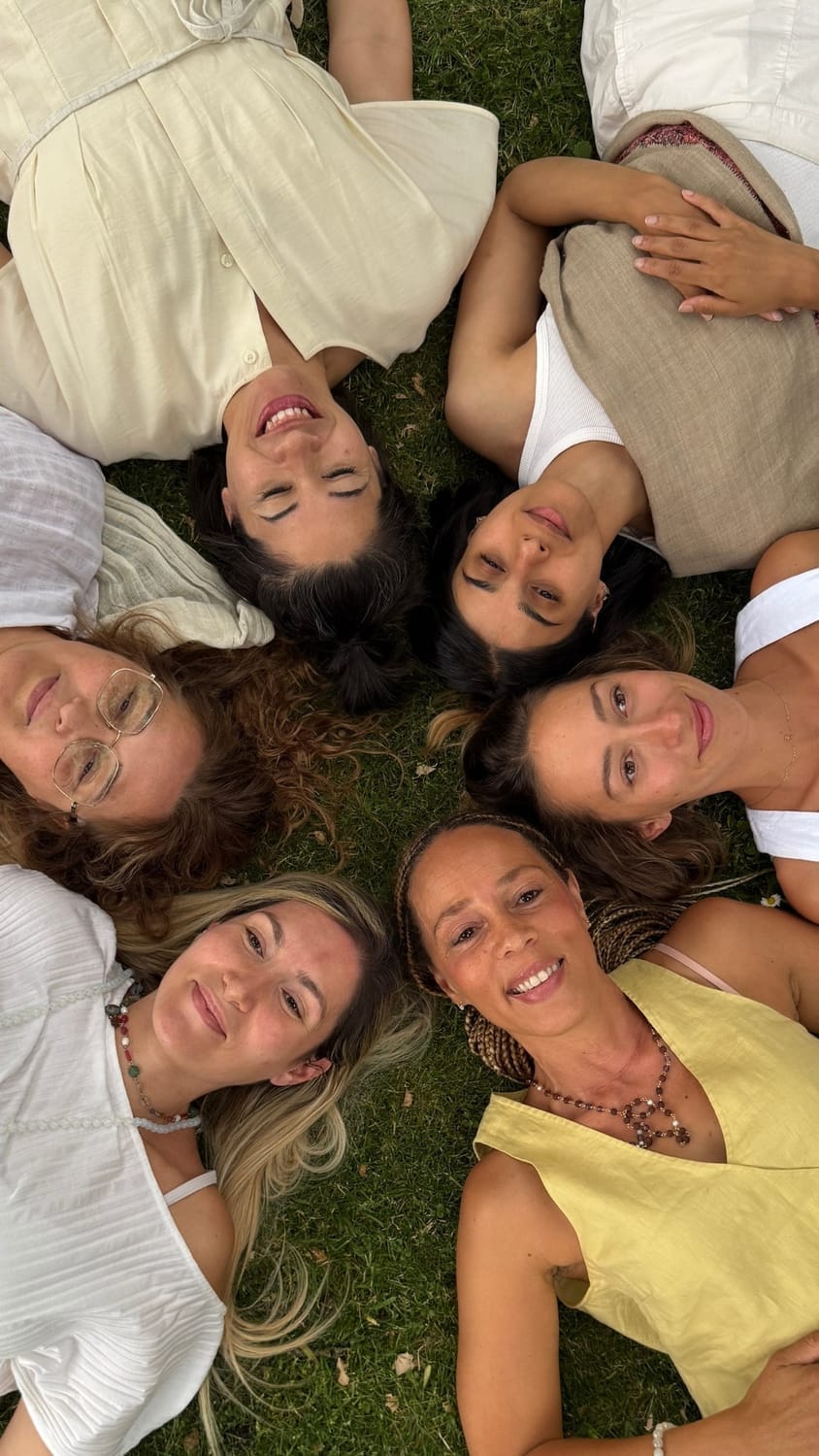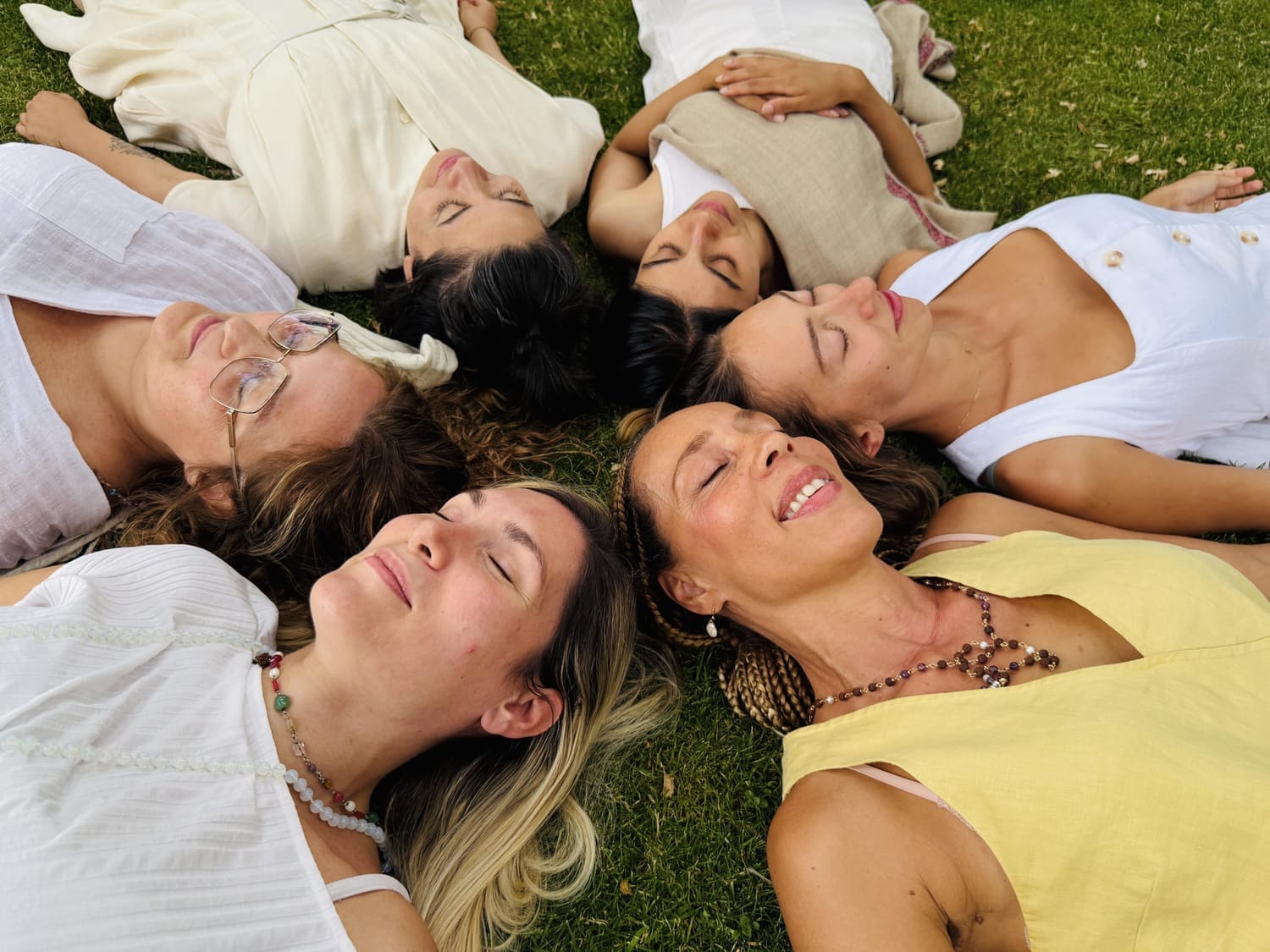How AI & Overstimulation Are Rewiring Our Brains — And Why Ritual, Rhythm & Community Are the Cure

Amrita Ma Devi
We are living through a seismic shift in human consciousness — and it’s happening at the speed of code.
Artificial Intelligence is reshaping everything. How we work. How we connect. How we think.
And while it brings convenience and opportunity, it also brings a silent but growing crisis — one that’s deeply nervous system-based.
The Cognitive Cost of a Digital World
We’re overstimulated, addicted to the scroll, and rarely fully here.
According to a 2023 study by Microsoft, the average human attention span is now just 8.25 seconds — down from 12 seconds in 2000. That’s shorter than a goldfish. Researchers from Harvard and MIT confirm that constant interruptions and multitasking reduce cognitive capacity and hinder long-term memory consolidation.¹
Meanwhile, AI tools are subtly altering our thinking.
They suggest our words, complete our thoughts, and even make decisions for us.
Our brains no longer stretch to solve problems the way they used to — because machines are doing the stretching.
This isn’t just about distraction.
It’s about the loss of deep attention, and with it, our connection to the inner Self.
The Rise of EMFs, AI—and Prāṇa Disturbance
Electromagnetic frequencies (EMFs) are rising, too. Cities are buzzing with Wi-Fi, Bluetooth, 5G towers, and AI-powered smart devices. The World Health Organisation now lists EMF exposure as a possible carcinogen² — and Ayurvedically, we know it disturbs vāta: the dosha of movement, space, and the nervous system.
Many modern symptoms—like anxiety, insomnia, restlessness, and poor digestion—are vāta imbalances.
And when vāta goes unchecked, it pulls the mind away from presence, and into fear, confusion, and overstimulation.
The Yogic Antidote: Pratyāhāra
In classical yoga and Ayurveda, there is a practice called pratyāhāra — the turning of the senses inward.
Charaka Samhita describes it as one of the foundational limbs of the yogic path. It's not a withdrawal from life, but a conscious choosing of where to direct our attention.³
In this age of overwhelm, pratyāhāra is a radical act.
It teaches us to pause, to unplug, to feel the body, and to listen to the quiet voice within.
When we do this, we restore the rhythm of prāṇa — our vital life force.
And this isn’t just spiritual poetry — it’s science-backed.
Neuroscience confirms that practices like meditation, breathwork, and sensory awareness improve brain plasticity, reduce cortisol levels, and increase parasympathetic tone (a.k.a., rest-and-digest mode).⁴
Sacred Systems for a Fast World
When the world shut down in 2020, many panicked.
But I didn’t.
I had a rhythm.
Not a rigid routine, but a living rhythm — one woven through my days like breath, like devotion. While much of the world collapsed into chaos, I heard a clear call to dharma — to create an online sanctuary for healing. A sacred community for women across the globe to reconnect to health, rhythm, and self-trust.
Because something incredible was happening under the surface…
🌍 The earth was restoring itself.
As planes were grounded and streets emptied, air pollution dropped, waters cleared, and wildlife re-emerged.⁽¹⁾
What we were all witnessing was visible proof that slowing down is not collapse — it’s regeneration. I had seen this truth for years during seasonal Ayurvedic cleanses.
The magic always happened when we did it together.
The shared commitment, the laughter, the mutual witnessing — made the journey feel lighter, more alive. And then the research started to echo what I had felt in my bones.
Women heal faster in community.
Studies show that women’s nervous systems are deeply co-regulated through social bonding — especially when stress is high.
Dr. Shelley Taylor, a UCLA psychologist, coined the phrase “tend and befriend” to describe how women, in contrast to the fight-or-flight response, are biologically wired to seek community during stress.⁽²⁾
When women gather in safe, supportive spaces, oxytocin rises, cortisol drops, and heart rate variability improves — all signs of nervous system repair.⁽³⁾
In other words: gathering is medicine.
And when we pair that with rituals, rhythm, and self-led healing — something profound happens.
The body begins to remember.
It remembers how to rest.
How to digest.
How to trust itself again.

Studies show that women’s nervous systems are deeply co-regulated through social bonding — especially when stress is high.
Science now supports what Ayurveda has taught for millennia:
🌿 Restorative movement (like yoga, walking, or feminine strength training) activates parasympathetic tone.
🌿 Ritual and routine create a sense of psychological safety.
🌿 Community deepens meaning, accountability, and transformation.
But many didn’t have that. They didn’t know how to be with themselves when the world slowed down. They didn’t know how to hold their silence. And that’s because we are not meant to, and that's what has left so many dysregulated, overwhelmed, and untethered.
That’s why I created the Sacred Vitality Collective — as a soul-led, feminine approach to healing. Not as a program, not as another checkbox of self-improvement…
But as a sacred space where women could remember themselves back to wholeness.
✨ To crack open our hearts again.
✨ To rebuild trust in our inner rhythm.
✨ To remember how to be in community — not perfectly, but with presence.
Inside, we hold space for each other to grow.
We listen, reflect, cook, rest, cry, laugh, and learn.
We honour the cycles.
And we rise — together.
If you’ve been trying to do it all alone, maybe this is your reminder:
You don’t have to.
Healing doesn’t happen in isolation.
It happens in sacred rhythm.
And it begins right here. Each time we gather its a timeline leap and nervous system upgrade.
I created this because I was done with the hustle. Done with burnout and bypassing and being told to “fix” myself. And I know you are too.
This isn’t a quick fix.
It’s a full-body yes to a new way of living.
👑 A way that honours your feminine cycles.
👑 Respects your mental health.
👑 Nourishes your gut, hormones, and heart.
And it gives you a sacred crew of women who are doing the real work right beside you
No shame. No pretending. Just presence.
This is that future. One where you are your own healer.
Where prevention is sacred.
Where nourishment is medicine.
Where your body is not a problem to solve — but a sacred home to come back to, again and again.
And you don’t have to do it alone.
This is why we gather.
This is why we slow down.
This is why the Sacred Vitality Collective exists — To remind you that healing is your birthright. Not a performance. Not a protocol.
But a remembering.
Come as you are.
Let rhythm, ritual, and reverence guide you home. 🕊️ Join here.
🔎 References:
Microsoft Attention Span Research: https://time.com/3858309/attention-spans-goldfish/
WHO EMF Risk Evaluation: https://www.who.int/news-room/questions-and-answers/item/radiation-electromagnetic-fields
Charaka Samhita Sutrasthana 1.41–43 – The role of sensory restraint (pratyāhāra) in cultivating health
Neuroscience of Meditation: Tang, Y.Y., Hölzel, B.K., & Posner, M.I. (2015). The neuroscience of mindfulness meditation. Nature Reviews Neuroscience, 16(4), 213–225.
Research Citations:
Taylor, S.E., et al., 2000. Biobehavioral responses to stress in females: tend-and-befriend vs. fight-or-flight. Psychological Review.
Pross, A. (2010). The impact of positive social connection on physiological resilience: A review. Journal of Health Psychology.
NASA Earth Science, 2020. Environmental restoration during COVID lockdowns.

I’m Amrita, your new guide.
Welcome to my Cookbook!
“Amrita here. Mom of 3 and lover of ancient wisdom, meditation & yoga. I transformed my family’s health with a plant-based diet.”
Latest Recipes
Recipe Categories
Life Style Categories
Subscribe
Subscribe to our newsletter and be informed about new recipes & workshops.
You can visit more...
About Us
Ayurveda Anytime is a health consultancy service, products and eLearning platform geared towards nourishment from an Ayurvedic perspective. We are wholehearted beings who flourish when wellbeing and living in balance with nature are embodied.
© 2025 ayurvedaanytime.com. All rights reserved.


